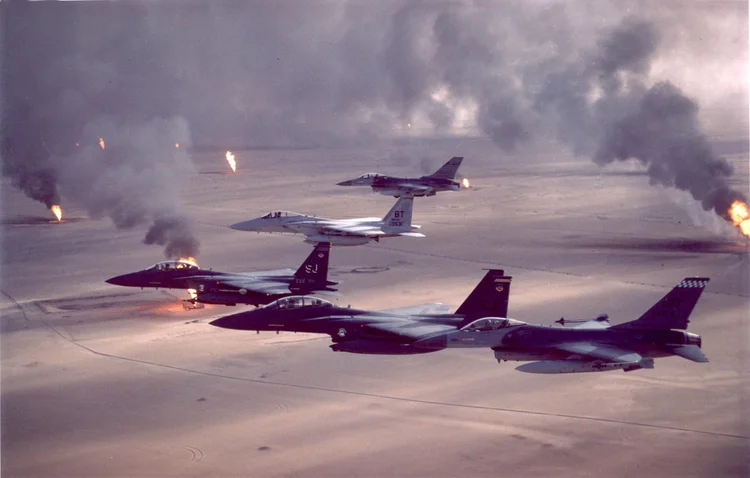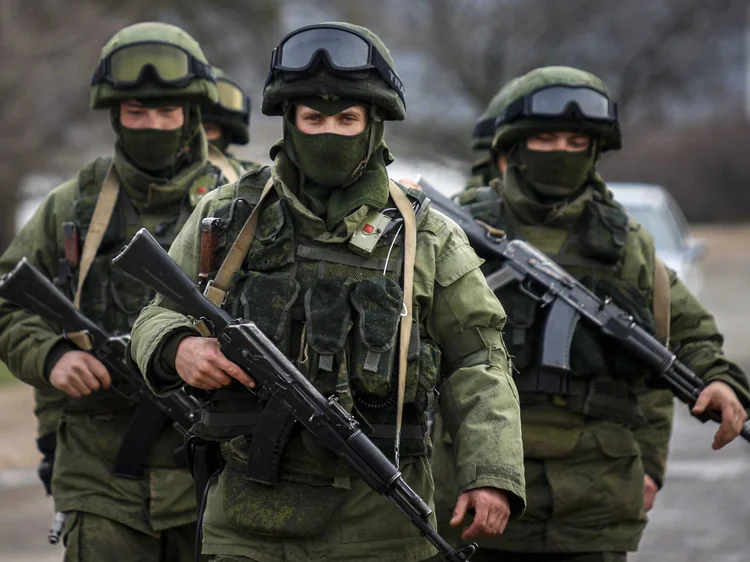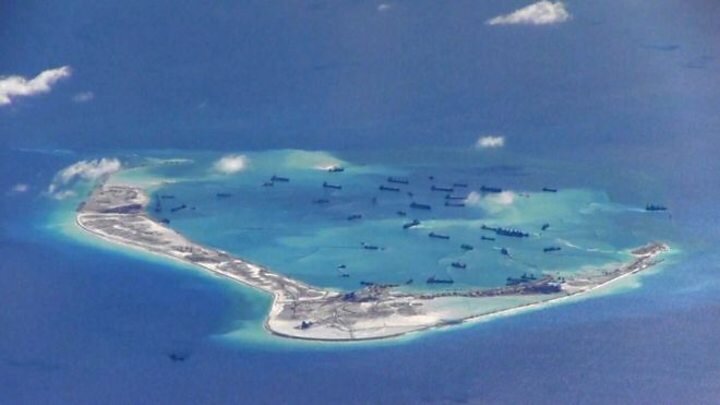Mike Fowler
The character of war has changed. Technological advancements and operational approaches have changed the face of warfare. Conventionally-focused Western militaries have created a sufficient deterrent built on their overwhelming advantages in firepower, technology, tactics, and effective training. However, unconventional warfare has become the method of choice to mitigate the technological military advantages of the United States and its allies.[1]
ASYMMETRIC WARFARE
Militaries axiomatically search for methods and equipment to find an asymmetric advantage over their adversaries. Leading up to World War I, countries across Europe sought an advantage in mobilization. Assuming modern warfare could deliver a quick, decisive blow, the first country to mobilize their massive army gained a significant advantage.[2] During the interwar period, countries sought to prevent repeating the stalemate of trench warfare by leveraging new technologies: airpower, submarines, and armor.[3] These innovations were effective at providing short-term, tactical advantages. But, both sides were able to match the innovations, negating any lasting strategic advantage—World War II still resulted in a conflict of exhaustion.[4]
After World War II, a nuclear standoff constrained the use of conventional warfare by major powers.[5] Both sides turned to unconventional warfare as a method to achieve national security goals while limiting the potential for escalation and circumventing international conventions designed to prevent conflict. Among others, the United States, the Soviet Union, China, France, and the United Kingdom propped up weak regimes and empowered rebel groups to act as proxies conducting irregular warfare on behalf of the patron state.[6] This empowerment often involved training, equipping, and funding non-state actors to overthrow or undermine governments that supported (whether real or perceived) the opposing power. In rare cases, the major powers inserted specially trained soldiers to assist in the organization, planning, and execution of insurgent operations.[7] This specialty mission of state-sponsored insurgency came to be known as unconventional warfare. In response to insurgencies and irregular war, the opposing polar power countered with training, equipping, and funding of counterinsurgency operations.[8] In rare cases (e.g., the United States in Vietnam or the Soviets in Afghanistan), the major powers committed large numbers of their own troops to conduct counterinsurgency.[9]
The Cold War was only cold in the sense that the two major powers managed to avoid open conventional and nuclear warfare. For proxies on both sides, this period was full of internal violence and government repression. Despite the breadth, quantity, and depth of proxy wars, the major powers continued to focus the bulk of their resources deterring a future conventional and nuclear conflict. Many of these proxy wars began as organic, anti-colonial insurgencies. Yet, few insurgencies during this period were able to avoid super-power sponsorship by one side or the other.
POST-COLD-WAR STRATEGIC PIVOT
After the collapse of the Soviet Union, the U.S. struggled through a period of uncertainty amid declarations of a “peace dividend” and suggestions of the “end of history.”[10] The 1990s presented four key lessons to aspiring major powers.[11] First, the collapse of the Soviet Union highlighted the futility of attempting to match U.S. and NATO tactical innovations without the economy to sustain them. Second, the proliferation of non-governmental organizations promoting democracy and human rights represented a shift in western methods of strategic competition. The Color Revolutions were largely non-violent, but they had the same subversive result as an insurgency: the overthrow or undermining of pro-Russian governments.[12] Similarly, the wave of democracy across Asia in the 1990s was a significant emotional event for the Chinese. Of course, most democratizing states in Asia were already pro-America.[13] Democratization of communist countries was limited to marginal states such as Laos and Cambodia. While China and Vietnam retained political communism, they adopted capitalist tendencies. These non-governmental organizations pierced the impermeable veil of sovereignty regarding intervention in another country’s politics.
Fighter aircraft fly over burning oil fields in Kuwait during Operation Desert Storm. (U.S. Air Force Photo)
Third, Operation Desert Storm demonstrated reliance on a massive but minimally trained army was insufficient against highly-trained forces with advanced weaponry.[14] Fourth, U.S. operations against Somali warlords demonstrated technological military advantage could be mitigated by irregular warfare. The Russians could compare their own experiences in Afghanistan, Chechnya, Georgia, and Estonia with U.S. and NATO experiences in Afghanistan and Iraq.[15]
In the near future, traditional conventional warfare methods will be limited to those cases in which the aggressor has an extreme combat advantage and the probability of a major power intervention is low. The West has obtained a credible conventional deterrent that adversaries would be lunatic to challenge.[16] If the United States and NATO maintain superior military capabilities, adversaries will avoid traditional conventional conflict.
UNCONVENTIONAL: THE NEAR FUTURE OF WARFARE
Leveraging the lessons of Ukraine, Syria, and the Islamic State, countries have changed the face of inter-state competition. While each country has its own approach to unconventional warfare, they share several common characteristics. They leverage loopholes in traditional notions of warfare to gain advantages against competitors and limit the potential for escalation to conventional conflict and/or major power intervention. The methods give primacy to psychological effects over physical destruction. They combine military and non-military instruments in a coordinated effort.[17] Strategic communication takes a more dominant role, while military force takes a supporting role. They employ a combination of exhaustion, denial, and subversion.[18] Exhaustion wears down the opponent. Denial finds ways to negate the use of long-range precision strike weapons. Subversion seeks to sway local opinion against the adversary. Using these three factors, there appear to be two predominant models of unconventional warfare: the Russian model and the Chinese model.
The Russian model is the most common implementation of unconventional war. Like Cold War operations, this model uses proxy forces and irregular warfare to exhaust an adversary.[19] It keeps the adversary occupied, focusing resources on internal security. It can be a useful foil to distract a country from a growing regional power or to short-circuit discussions on joining an economic union or military alliance.
At first glance, the Russian model appears to be a Cold War regression with emphasis on proxies to conduct irregular warfare in a geo-political scramble for client states and overseas bases. However, the Russian model leverages technological advances to gain effectiveness and efficiency via subversion. Russia’s fomenting of rebellion in eastern Ukraine gave Russia the opportunity to seize Crimea while simultaneously derailing Ukraine’s inclusion into the European Union and NATO. During the Cold War, old-school radio, television, and print propaganda was often dismissed by adversaries when attribution was obvious. Today’s opaque attribution of computer network attacks gives Russia plausible deniability while sowing confusion. Russia’s leverage of cyber social engineering subverts its foes via social media.[20] Evolving artificial intelligence will improve their ability to target susceptible individuals based on complementary ideologies, money challenges, ego, search for adventure, and disaffection with the extant political or economic system.[21] Even when Russian denials are implausible, the very act of denial backed by considerable military and nuclear force mitigates a conventional response forcing NATO to explore response options to counter each unconventional brush fire.
The China model is different. China re-crafted the Russian model based on Chinese strategic thinking to create a “penetrating and persistent campaign.”[22] The Chinese model falls into what some refer to as Gray Zone activities—it preys upon ambiguities in international law and eschews the level of violence associated with irregular warfare tactics. Unlike Russia, China’s unconventional warfare does not use special operations forces, but involves the physical, de facto, acquisition of territory. China relies on less overtly hostile forces such as para-police and coast guard forces. China uses its fishing fleet as a type of unarmed maritime militia, sending large numbers of vessels to intimidate adversary ships and “cabbage” islands to obstruct resupply operations.[23] Like Russia, the China model is intertwined with information warfare and strategic communications to convince its own population of the righteousness of its cause and to stiff-arm international complaints of China’s failure to follow conventions, norms, and rulings on disputed territory. Unlike Russia, China’s efforts at subversion do not rely on insurgency but instead sews division between potential allied opponents. For example, China’s wooing of President Duterte was partially responsible for the cooling of U.S.-Philippine relations. Meanwhile, China uses its substantial cyber capability to steal corporate secrets in an effort to boost its own economy.
China is integrating diplomatic maneuvers, economic, and military activities to achieve its strategic objectives. For example, Chinese diplomatic and economic efforts in the South China Sea have softened efforts to enforce the United Nations Convention on the Law of the Sea. China uses infrastructure development activities to acquire territory, overseas access, and presence. China’s Belt and Road Initiative to build a “string of pearls” of airports, ports, and special economic zones across South Asia and East Africa provides China “strategic strong points” for basing and resupply while simultaneously limiting competitors’ options.[24] The debt structure of these development projects typically result in Chinese oversight of the operations and, in rare cases, repossession. For example, China essentially owns the Sri Lanka port of Hambantota. China’s infrastructure development projects, such as those in Ethiopia and Djibouti, include provisions for special territorial rights such as special economic zones or military bases.[25] China’s development of a marine observation center in the Maldives and attempts to build a road into disputed territory on Bhutan’s border has Indian security specialists concerned about territorial encirclement.[26] These efforts provide necessary infrastructure for any air or maritime power projection while limiting access to potential competitors. Plus, it provides a chain of intelligence collection posts. This territorial breadth creates de facto buffer zones that create time and space to deal with any potential adversary.
Disputed South China Sea islands (BBC)
Both models of unconventional warfare seek to exhaust the adversary while denying the traditional advantages of high-tech conventional military capabilities. Unconventional war wears down the opponent over time by requiring them to use a disproportionate amount of resources creating the perception of “the improbability of victory or the unacceptable cost” of continuing operations.[27] It exploits the inefficiency of maintaining large or multiple fronts. Whether it is to prevent insurgent operations or to prevent the acquisition of a partner’s territory, countering unconventional warfare requires significant amounts of physical presence. This widespread physical presence is expensive and inefficient as the majority of forces sit in a state of preparedness instead of performing other missions or routine training. It drains the opponent’s time, treasure, and talent, causing the so-called death by a thousand cuts. While these forces can act as a tripwire for escalation, they are less ready for conventional warfare as their resources, training, and employment are diverted to other tasks.
Western states are responding with cooperative approaches but are hampered by several constraints. For example, security cooperation activities include arms sales, weapons transfers, military and police training, advising, personnel exchanges, and infrastructure development. While this out-sourcing attempts at efficiency, it fails to address underlying causes of conflict. Taking from the Chinese playbook, a whole of government approach is necessary to counter an unconventional warfare campaign. However, democratic governments are designed with oversight, controls, and procedures which stovepipe each instrument of national power making whole-of-government approaches difficult to organize and operate. A democracy’s ability to counter an authoritarian government’s information warfare campaign is handicapped by domestic politics and international norms.
CONCLUSION
Unconventional warfare is perceived as a temporary, undesired, annoying aberration. The preoccupation of Western militaries with creating advantages in conventional weapons succeeded in deterring the conventional use of force but leaves them under-prepared to deal with unconventional warfare strategies. Major acquisition programs and the Third Offset Strategy still view Russian and Chinese competition through a conventional lens.[28] Yet, major power competition has evolved in style. An inability to counter U.S. military superiority has led China, Russia, and major regional powers to employ unconventional warfare to achieve their national security objectives. Technological developments re-invented this type of warfare and improved its reach and potential effectiveness. Russia and China have adopted similar but unique models of unconventional warfare, setting a standard that others such as Iran and Saudi Arabia are trying to emulate to intentionally destabilize countries and regions.[29] Within the parameters of a democratic system, countering unconventional warfare is problematic. Attempts at global security cooperation operations may improve the efficiency of global physical presence but is no replacement for a whole-of-government effort to address root problems enabling the success of these unconventional warfare models.



No comments:
Post a Comment